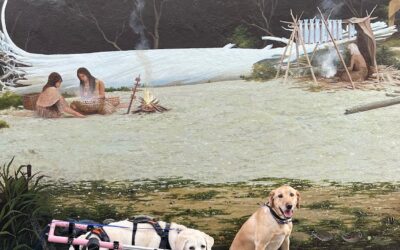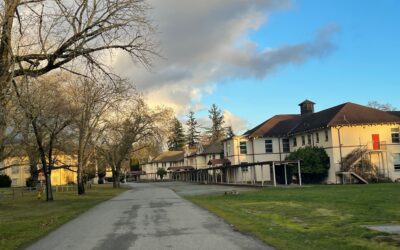Many of our national parks in the U.S. contain large wilderness areas. Fifty of our national parks have designated wilderness areas, totaling over 40 million acres. Many of these wilderness areas are visited by many people every year. And every year, due to miscalculation, misfortune, poor planning, or any combination thereof, people go missing.
Missing or lost persons are routine for national parks. Let me say that word again: ROUTINE. It happens on a regular basis. It’s not surprising. It’s so unsurprising in fact, that most national parks have a standard search and rescue (SAR) operational plan in place. When the next person gets lost, they pull the SAR Operational Plan Notebook down from the shelf (where it’s used so often it does not collect dust), and follow standard procedures for organizing search efforts.
In some national parks, they even have detailed, SAR plans for areas in which persons get lost on a regular basis. At Mount Rainier, for example, hundreds of inexperienced and unprepared hikers attempt to ascend the Muir Snowfield every year. For that reason, it’s the park area with the highest frequency of search and rescue incidents. And, for that reason, Mount Rainier has prepared a SAR PrePlan specific to the Muir Snowfield. It serves as a “quick guide” to where hikers have gotten lost in the past, and provides mapped assignments for sending searchers to those most likely locations. It’s the SAR equivalent to “round up the usual suspects.”
Due to their dedication, expertise, and knowledge of the local terrain, rangers are able to quickly find the vast majority of persons who go missing in national parks. This is consistent with data from the International Search and Rescue Database (ISRID), compiled by Robert Koester in his book “Lost Person Behavior,” which show that 93% of lost person incidents are resolved within one day, 95.4% within two days, and 99.7% within three days. So, if you are reading this on your cell phone while lost in the wilderness, that’s pretty good news.
Ah, but what about that remaining 0.3%? Here, the data are not as well maintained, but a large percentage of these missing are found as skeletal remains at a much later date. For example, every year in Washington State, we hear about SAR incidents where extended searching just did not find the missing subject. And, every year, we hear that hunters or hikers have stumbled onto human remains that solve old searches.
Well OK, but that still leaves a very small subset of missing persons in the wilderness who are simply never found. How should we think about these cases? What conclusions can reasonable people draw about such mysteries?
If you have wilderness experience, as a park ranger, an outdoorsman, or a SAR volunteer, you know two things: (1) How easy it can be to get lost in the wilderness, and (2) How hard it can be to find someone in a wilderness environment. In the Pacific Northwest, dark forest and dense brush prevent searchers from being effective. Steep and hazardous mountain and river terrain blocks access and prevents searching.
Searcher limitations are also an important factor. Field studies have shown that human searchers will simply not see up to 25% of clue objects left in plain sight. If you’re a tired searcher, struggling over downed logs while avoiding sharp spines and fending off swarming mosquitoes, you can easily walk right by a downed subject concealed by brush. If the wind is blowing in the wrong direction, search dogs will fail to detect persons just feet away. Helicopters over forested areas have almost zero ability to detect persons on the ground. In fact, the probability concepts used in formal search theory explicitly assume that searchers (humans, dogs, etc.) are imperfect, and will fail to detect some of the persons or objects they are looking for.
In summary, reasonable, wilderness-experienced persons know that there is, in fact, no mystery. Lots of people get lost every year; most are found; a very small number are never found – because it’s damn hard to find them.
Which brings us at last, to consider what unreasonable people conclude about this “mystery.” And some of these people conclude that you can make money by exploiting the gullible. They write articles, books, and web pages that take ordinary SAR incidents and spin them into the gold of mystery. Weaving not-unusual facts (“the search went on for days and days, with nothing found”) with totally-fabricated myths (“let’s consider the Bigfoot fossil record”), these folks fit the time-honored mold of charlatans, profiting from an uncritical public.
So the next time you run into an article in the popular press, or an urgent social media post claiming that the national park system is covering up 1600 missing persons cases, take a moment to consider the source. And if “Bigfoot Hunter” is prominent in the author’s resume, you might want to think twice when alien abduction or large hairy humanoids are offered as an explanation for the missing who are never (or not yet) found. It just might be wiser to consider the simple explanation: It’s damn hard to find lost people in the wilderness.

![Alien-Abduction-blog8]](https://suzanneelshult.com/wp-content/uploads/2021/03/Alien-Abduction-blog8.png)


0 Comments